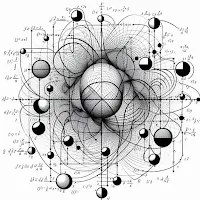Dadas las siguientes ecuaciones diferenciales de primer orden, (i) obtener la respectiva ecuación recursiva por método de Euler con el paso $T_s$ (o período de muestreo) que se indica; (ii) hallar manualmente los primeros cinco valores de la solución numérica; (iii) implementar el método en MATLAB y graficar la solución; (iv) comparar el resultado con el obtenido con las funciones dsolve y ode45 de MATLAB; (v) interpretar el resultado. Ver los ejercicios propuestos 2.6 para la aplicación del método de Euler a ecuaciones diferenciales de orden superior.
- $\dot{y}+2y=0,y(0)=1$, $T_s=0.1$
- $\dot{P}=kP,P(0)=1$, $T_s=0.1$, $k=0.2~\mathrm{s}^{-1}$
- $\dot{y}=\frac{t}{y},y(0)=0$, $T_s=0.1$
- $\dot{y}=\frac{t}{y},y(0)=1$, $T_s=0.1$
- $\dot{y}=\frac{y}{t},y(0)=0$, $T_s=0.1$
- $\dot{y}=\frac{y}{t},y(1)=0$, $T_s=0.1$
- $\dot{y}=\frac{y}{t},y(1)=1$, $T_s=0.2$
- $\dot{y}=y(1+\frac{1}{t}) ,y(0)=1$, $T_s=0.1$
- $\dot{y}=y(1+\frac{1}{t}) ,y(1)=0$, $T_s=1$
- $\dot{y}=y(1+\frac{1}{t}) ,y(1)=1$, $T_s=0.2$
- $\dot{y}=4\sqrt{y}\cos 2t,y(0)=0$, $T_s=0.1$
- $\dot{h}=-A_o{{\sqrt{2gh}/A_t}},h(0)=1$, $T_s=0.8$. Donde $g=9.8~\mathrm{m/{s}^2}$, $A_o=\pi (0.05)^2~\mathrm{m^2}$ y $A_t=\pi (1)^2~\mathrm{m^2}$.
- $\dot{T}=k(T-T_m),T(0)=200$, $T_s=0.2$. Donde $k=-0.2~\mathrm{s^{-1}}$ y $T_m=20~\mathrm{°C}$
- $\dot{P}=P(a-bP),P(0)=1,a=1,b=2$, $T_s=0.1$
- $\dot{P}=P(a-bP),P(0)=1,a=2,b=1$, $T_s=0.1$
- $T\dot{y}+y=1,T=0.5,y(0)=0$, $T_s=0.1$
- $\dot{y}+5y=e^{-t},y(0)=1$ , $T_s=0.1$
- $\dot{y}+5y=1+e^{-5t},y(0)=1$, $T_s=0.2$
- $\dot{y}-y=2t,y(0)=2$, $T_s=0.1$
- $\dot{y}+2y=3e^{-2t},y(0)=2$, $T_s=0.5$
- $\dot{y}+3y=\sin t,y(0)=0$, $T_s=0.1$
- $m\dot{v}=mg-fv,v(0)=0$. Donde $g=9.8~\mathrm{m/{s}^2}$, $m=1~\mathrm{kg}$ y $f=0.01~\mathrm{kg/s}$
- $\dot{V}=\lambda e^{-\alpha t}V,V(0)=2$, $T_s=0.5$. Donde $\alpha =0.3$ y $\lambda =1$
- $Ldi/dt+Ri=V_e(t), i(0)=0$, $T_s=0.1$. Donde, $V_e(t) =10\mathrm{sen}0.1t$, $R=10~\mathrm{\Omega}$ y $L=0.1~\mathrm{H}$
- $Ldi/dt+Ri=V_e(t),i(0)=0$, $T_s=0.5$. Donde los parámetros son las mismos del ejercicio anterior
- $\mathbf{\dot{x}}=\left[ \begin{matrix} 2& 3\\ 2& 1\\\end{matrix} \right] \mathbf{x},\mathbf{x}\left( 0 \right) =\left[ \begin{array}{c} 1\\ 1\\\end{array} \right] ,T_s=0.1$
- $\mathbf{\dot{x}}=\left[ \begin{matrix} 2& 3\\ 2&1\\\end{matrix} \right] \mathbf{x}+\left[ \begin{array}{c} 1\\ -1\\\end{array} \right] u,u=1,\mathbf{x}(0) =\left[ \begin{array}{c} 0\\ 1\\\end{array} \right] , T_s=0.1$
- $\mathbf{\dot{x}} = \left[ \begin{matrix} 0 & 1\\ -1& 0\\\end{matrix} \right] \mathbf{x}+\left[ \begin{array}{c} 0 \\ 1\\\end{array} \right] u, u=1, \mathbf{x}(0)=\left[ \begin{array}{c} 1 \\ 0\\\end{array} \right], T_s=0.1$
- $\dot{y}=4\sqrt{y}\cos 2t,y(1)=1$, $T_s=0.1$
- (*) $\dot{y}+2y=u_s(t-1),y(0)=1$ . Entrada definida por partes
- (*) $T\dot{y}+y=\left\{ \begin{matrix} 0,& t<1\\ 1,& t\geqslant 1\\\end{matrix} \right., T=1.5,y(0)=2$. Entrada definida por partes

Comentarios